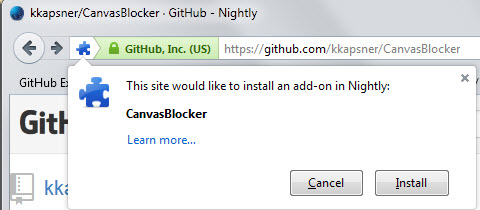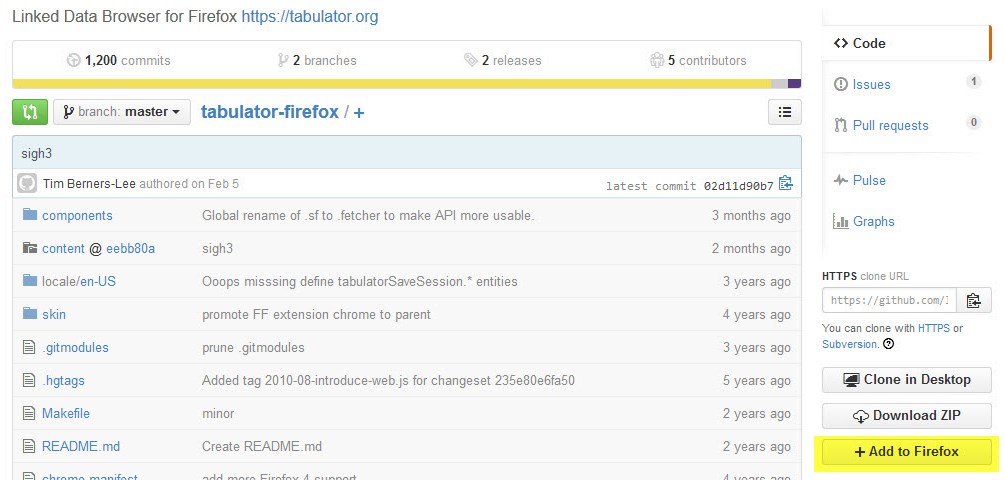How to install Firefox add-ons directly from GitHub
Not all but several Firefox add-on projects are hosted on the project hosting website GitHub. This means among other things that the source code of the extension and often also its Firefox xpi installation file are offered there.
The Github version may be newer than the version on Mozilla's add-on repository due to the way updates are handled.
The most recent version of Canvas Blocker for instance is 0.1.4 on Mozilla's website and 0.1.5 on GitHub.
New versions are sometimes listed on the complete version history page on Mozilla's site but that is not always the case.
A new version may introduce new features or improvements, and it is usually a good idea to install to because of that.
Installing Firefox add-ons hosted on GitHub
There are two main methods that allow you to install add-ons hosted on GitHub. Please note that these methods may not work anymore in Stable and Beta builds of Firefox once Mozilla introduces add-on signing in the browser.
Method 1: The manual way
While on GitHub, locate the download button on the website and click on it. This downloads the whole project as a zip file to the local system.
Extract the zip archive on your system, locate the xpi file in it and drag & drop it into a Firefox window.
Firefox displays an installation prompt once you let go of the mouse.

Click install to add the add-on to the browser or cancel to stop the installation at this point.
Method 2: The easy way
Download and install The GitHub Extension Installer add-on for Firefox. The browser add-on adds a new "add to Firefox" option to GitHub pages that host Firefox add-ons that you can click on to install it directly from the site without having to download and extract its archive first.

add to Firefox button
The installation itself happens silently in the background but you will get a prompt if a restart is required to complete it.
While it is definitely easier than the manual way, it works only if the install.rdf file is in the project root.
While that is the case for some projects, it is not for all which means that this particular method won't work in that case.
Closing Words
Some projects don't list xpi files directly. If that is the case you find them listed on the releases page of the project. Simply add the /releases/ directory to the end of the address and you should get there.
This article was first seen on ComTek's "TekBits" Technology News

- Log in to post comments